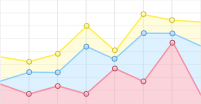| Citation: | Zhenyu Zhang, Kangkang Chang, Fuyu Wei, Guizhen Liang. LONG-TIME BEHAVIOR OF AVIAN INFLUENZA MODEL WITH NONLOCAL DIFFUSION[J]. Journal of Applied Analysis & Computation, 2026, 16(1): 1-16. doi: 10.11948/20240061 |
LONG-TIME BEHAVIOR OF AVIAN INFLUENZA MODEL WITH NONLOCAL DIFFUSION
-
Abstract
The aim of this study is to investigate the long-time behavior of a model of avian influenza incorporating nonlocal diffusion. We establish the existence, uniqueness, positivity and boundedness of the solution by constructing a Lyapunov function and utilizing the eigenvalue problem of the nonlocal diffusion term. The basic reproduction number is determined through the generation matrix method. By constructing Lyapunov function and using the comparison principle, we demonstrate the global stability and uniform persistence of the system. Numerical simulations are performed to validate our theoretical findings, indicating that diffusion has a pronounced impact on the disease. Our findings reveal that slight changes in the diffusion coefficient lead to significant changes in both susceptible and infected groups. Therefore, to control the development and spread of the disease, it is essential to cull avian populations and limit human movement during outbreaks.
-

-
References
[1] C. J. Alhassan and K. O. Achema, Modeling the transmission dynamics of an avian influenza: Qualitative and quantitative analysis, IOSR Journal of Mathematics, 2020, 16(3), 44–55. [2] A. Ali, S. U. Khan, I. Ali and F. U. Khan, On dynamics of stochastic avian influenza model with asymptomatic carrier using spectral method, Mathematical Methods in the Applied Sciences, 2022, 45(13), 8230–8246. [3] S. Bentout, S. Djilali, T. Kuniya and J. Wang, Mathematical analysis of a vaccination epidemic model with nonlocal diffusion, Math. Meth. Appl. Sci., 2023, 46(9), 10970–10994. [4] K. Chang, Z. Zhang and G. Liang, Threshold dynamics of a nonlocal diffusion West Nile virus model with spatial heterogeneity, AIMS Mathematics, 2023, 8(6), 14253–14269. [5] Y. Chen, Z. Jin, J. Zhang, Y. Wang and J. Zhang, Global dynamical analysis of H5 subtype avian influenza model, International Journal of Biomathematics, 2022, 15(08), 2250058. [6] Y. Feng, W. Li and F. Yang, Asymptotic profiles of a nonlocal dispersal SIS epidemic model with saturated incidence, Proceedings of the Royal Society of Edinburgh: Section A Mathematics, 2024, 1–33. [7] V. Hutson, S. Martinez, K. Mischaikow and G. T. Vickers, The evolution of dispersal, J. Math. Biol., 2023, 47, 483–517. [8] X. Jiang, Y. Yu, F. Meng and Y. Xu, Modelling the dynamics of avian influenza with nonlinear recovery rate and phychological effect, Journal of Applied Analysis and Computation, 2020, 10(3), 1170–1192. doi: 10.11948/20190253 [9] C. Y. Kao, Y. Lou and W. Shen, Random dispersal vs non-local dispersal, Discrete Contin. Dyn. Syst., 2010, 26, 551–596. [10] T. Kuniya and J. Wang, Global dynamics of an SIR epidemic model with nonlocal diffusion, Onlinear Analysis: Real World Applications, 2018, 43, 262–282. [11] S. Liu, S. Ruan and X. Zhang, Nonlinear dynamics of avian influenza epidemic models, Mathematical Biosciences, 2017, 283, 118–135. [12] Y. Liu, S. Ruan and L. Yang, Stability transition of persistence and extinction in an avian influenza model with Allee effect and stochasticity, Commun. Nonlinear Sci. Numer. Simul., 2020, 91, 105416. [13] J. García-Melián and J. D. Rossi, On the principal eigenvalue of some nonlocal diffusion problems, J. Differential Equations, 2009, 246, 21–38. [14] C. Modnak and J. Wang, An avian influenza model with latency and vaccination, Dynamical Systems, 2019, 34(2), 195–217. [15] J. D. Murray, Spatial Models and Biomedical Applications, Mathematical Biology, 2003. [16] A. Pazy, Semigroups of Linear Operators and Applications to Partial Differential Equations, Springer-Verlag New York Berlin Heidelberg Tokyo, 1983. [17] M. Al-Qureshi, S. Rashid, F. Jarad and M. S. Alharthi, Dynamical behavior of a stochastic highly pathogenic avian influenza A (HPAI) epidemic model via piecewise fractional differential technique, AIMS Mathematics, 2023, 8(1), 1737–1756. [18] K. Ren, X. Li and Q. Zhang, Near-optimal control and threshold behavior of an avian influenza model with spatial diffusion on complex networks, Mathematical Biosciences and Engineering, 2021, 18(5), 6452–6483. [19] S. Sharma, A. Mondal, A. K. Pal and G. P. Samanta, Stability analysis and optimal control of avian influenza virus A with time delays, International Journal of Dynamics and Control, 2018, 6, 1351–1366. [20] C. Tadmo, B. Tsanou and A. F. Feukouo, Avian-human influenza epidemic model with diffusion, nonlocal delay and spatial homogeneous environment, Nonlinear Analysis: Real World Applications, 2022, 67, 103615. [21] Q. Tang, J. Ge and Z. Lin, An SEI-SI avian-human influenza model with diffusion and nonlocal delay, Applied Mathematics and Computation, 2014, 247, 753–761. [22] H. R. Thieme, Spectral bound and reproduction number for infinite-dimensional population structure and time heterogeneity, SIAM J. Appl. Math., 2009, 70, 188–211. [23] F. Yang, W. Li and S. Ruan, Dynamics of a nonlocal dispersal SIS epidemic model with Neumann boundary conditions, J. Differential Equations, 2019, 267, 2011–2051. [24] Y. Yang and L. Wang, Global dynamics and rich sliding motion in an avian-only Filippov system in combating avian influenza, International Journal of Bifurcation and Chaos, 2020, 30(1), 2050008. [25] F. Zhang and X. Zhang, The threshold of a stochastic avian-human influenza epidemic model with psychological effect, Physica A, 2018, 492, 485–495. [26] X. Zhang, Global dynamics of a stochastic avian-human influenza epidemic model with logistic growth for avian population, Nonlinear Dynamics, 2017, 90(4), 2331–2343. [27] T. Zheng, L. Nie, H. Zhu, Y. Luo and Z. Teng, Role of seasonality and spatial heterogeneous in the transmission dynamics of avian influenza, Nonlinear Analysis: Real World Applications, 2022, 67, 103567. -
-
-
Figure 1.
The evolution paths of
$S_{a}, I_{a}, S_{h}, I_{h}$ -
Figure 2.
The evolution paths of
$S_{a}, I_{a}, S_{h}, I_{h}$ -
Figure 3.
The evolution paths of
$S_{a}, I_{a}, S_{h}, I_{h}$ -
Figure 4.
The evolution paths of
$S_{a}, I_{a}, S_{h}, I_{h}$





 DownLoad:
DownLoad:


